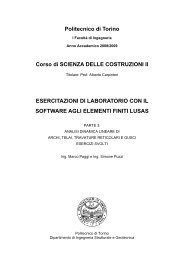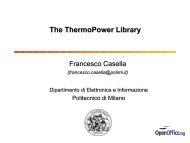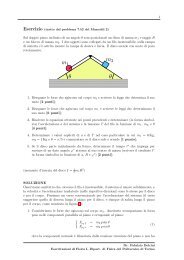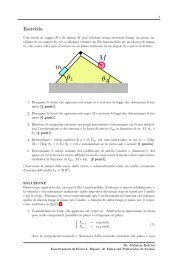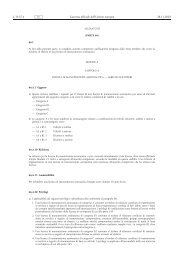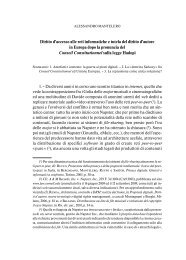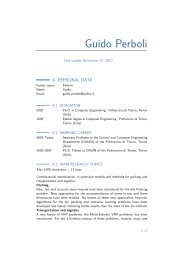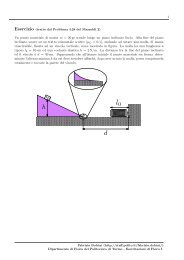The ITER toroidal field model coil project
The ITER toroidal field model coil project
The ITER toroidal field model coil project
You also want an ePaper? Increase the reach of your titles
YUMPU automatically turns print PDFs into web optimized ePapers that Google loves.
230 A. Ulbricht et al. / Fusion Engineering and Design 73 (2005) 189–327<br />
Fig. 4.31. LCT <strong>coil</strong> and TFMC safety discharge (I1 and I2 LCT <strong>coil</strong><br />
and TFMC winding currents).<br />
the pulse (time t1) with the controlled ramp down of<br />
the current in the TFMC <strong>coil</strong> at the rate of 70 A/s,<br />
followed almost immediately by the LCT <strong>coil</strong> with a<br />
ramp down rate of 18 A/s. After 197 s (time t2) a fault<br />
in the 20 kA dump circuit initiated an inverter mode<br />
discharge. This can be seen also in the TFMC current<br />
whose ramp down rate changes suddenly from 70<br />
to 1000 A/s. <strong>The</strong> ramp rate for the LCT <strong>coil</strong> remains<br />
unchanged. After 20 s (time t3 = 3147 s) the operator,<br />
having noticed an increase of current in the LCT <strong>coil</strong>,<br />
induced by TFMC current transient, pressed the emergency<br />
stop thus initiating a safety discharge of the two<br />
<strong>coil</strong>s. If the operator had not pressed the emergency<br />
stop, the overshoot in the current of the LCT <strong>coil</strong>, which<br />
occurs at time t4 when the current in the TFMC reaches<br />
zero, would have been only 850 A with no problem for<br />
the <strong>coil</strong>. <strong>The</strong> following Fig. 4.31 shows a comparison<br />
between computed winding currents and experimental<br />
data during the typical exponential decay of the<br />
safety discharge. In this condition, the power supplies<br />
are disconnected and the <strong>coil</strong> energy is discharged in the<br />
dumping resistors Rd1 = 125 m� for the LCT <strong>coil</strong> and<br />
Rd2 = 6.75 m� for TFMC. <strong>The</strong> current transient in this<br />
case is obtained by simple integration of the circuit Eq.<br />
(4.1) with initial conditions given by the previous run<br />
and zero forcing voltage. Taking into account the resis-<br />
tance of the conventional bus bar system mentioned<br />
before, the resistance R11 in series with the LCT <strong>coil</strong><br />
winding in this configuration for the safety discharge<br />
is 125.25 m�. Similarly, summing the resistance of the<br />
dump resistor (Rd2 = 6.75 m�), the resistance of the Al<br />
bus bar and flexible cables mentioned before (0.05 m�)<br />
and the resistance of an additional Cu bus bar system<br />
that connects the dump resistor itself (227 ��) the<br />
resistance R22 of the circuit for the TFMC is equal<br />
to 7.027 m�. <strong>The</strong> resulting time constants of the two<br />
windings, respectively, of 12.5 s for the LCT <strong>coil</strong> and<br />
4 s for the TFMC <strong>coil</strong>, have been validated experimentally<br />
in several safety discharges.<br />
4.5.2. Power losses in steady state, inverter mode<br />
and safety discharges<br />
This paragraph deals with the evaluation of the<br />
power losses due to Joule effect in the bus bar system<br />
and to the eddy currents in the <strong>coil</strong> passive structures,<br />
induced by time-varying excitation, which represent<br />
almost 90% of the total losses of the <strong>coil</strong>s.<br />
A pulse with flat top current in the LCT <strong>coil</strong> of 5.7 kA<br />
and in TFMC of 25 kA, referred in Section 6 as “standard<br />
safety discharge”, has been taken as a reference.<br />
<strong>The</strong> typical ramp up rate used for this type of pulse is<br />
16 A/s for the LCT <strong>coil</strong> and 70 A/s for the TFMC (see<br />
Fig. 4.32).<br />
In addition to the currents in the LCT <strong>coil</strong> and the<br />
TFMC windings, Fig. 4.32 shows the following measurements:<br />
heat load on the LCT <strong>coil</strong> case; heat load<br />
on the TFMC windings and heat load on the TFMC<br />
case. <strong>The</strong> associated energies, also shown in the figure,<br />
are obtained by signal integration. <strong>The</strong> heat loads of<br />
the two <strong>coil</strong> cases, with the exception of a small transient<br />
due to eddy currents induced during the current<br />
rise, remain practically constant. <strong>The</strong> heat load on the<br />
TFMC windings instead increases by 40 W. This heat<br />
is generated in the TFMC radial plates by the eddy currents<br />
induced by the power supply voltage ripple 1 and<br />
1 A 12-pulse thyristor converter can be represented by a DC controlled<br />
voltage source of amplitude Vd = Vd0 cos(α) with superimposed<br />
a voltage ripple made of sinusoidal contribution of amplitude<br />
√ 2Vn and frequency multiple of 50 Hz (where the harmonic number<br />
n = k × p, with p = 12 and k =1,2,...). At 25 kA flat top the DC voltage<br />
level in the TFMC power circuit is 1.25 V which correspond to<br />
4% of Vd0. Anα-angle close to 90 ◦ is the worse condition from the<br />
point of view of the voltage ripple. For a 12-pulse thyristor converter,



